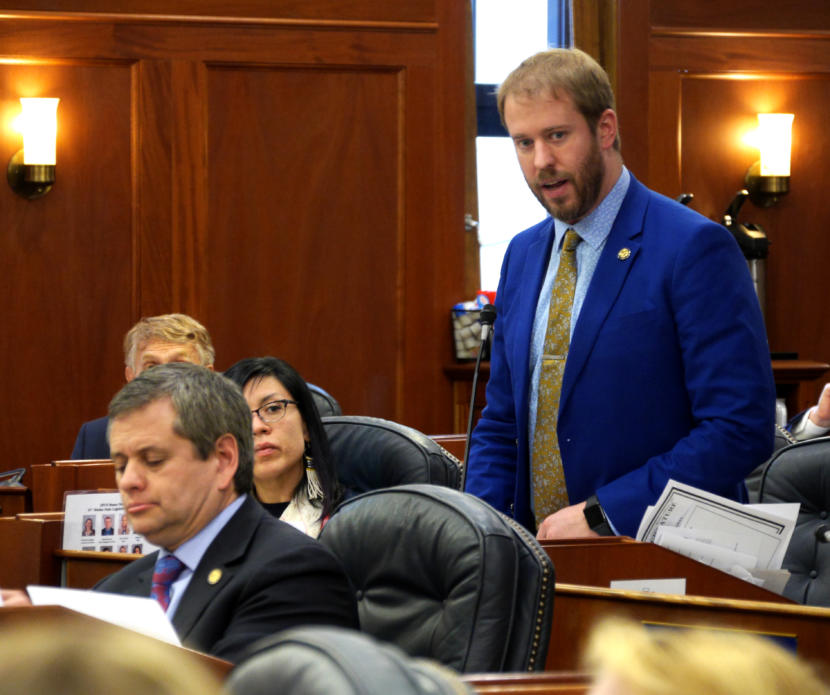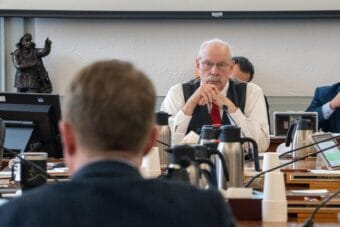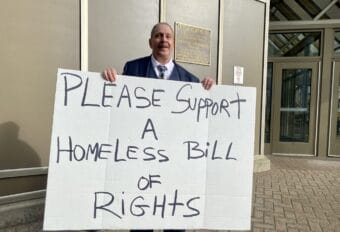
Members of the Alaska House of Representatives have been discussing different ideas on changing the formula that sets permanent fund dividends. While the Senate has discussed a bill that would link larger PFDs to more state taxes, the House bills are just focused on dividends.
Under three of the proposals, dividends would be bigger than the checks Alaskans have gotten in recent years. But they would still be smaller than what Gov. Mike Dunleavy wants.
Each of the proposals seeks to solve the state’s budget problems in different ways.
A plan by Fairbanks Democratic Rep. Grier Hopkins, House Bill 4009, would draw from two sources to pay PFDs. One would continue to be the permanent fund with one-quarter of the annual draw going to PFDs. But the other source would be the state’s oil and gas royalties. Half of that money would go to dividends.
“I believe our dividend needs to be more sustainable and more accurately reflect the health of Alaska’s economy,” Hopkins said. “When oil goes up, the dividend should go up. It shouldn’t be solely reliant on the wealth of Wall Street and outside investments, done very well by our permanent fund corporation.”
Hopkins’ proposal would lead to an annual deficit of roughly $400 million over the next nine years, according to a nonpartisan analysis. He said his bill should be part of a larger package that also includes new revenue for the state.
Hopkins also has proposed a constitutional amendment that would guarantee that dividends be paid based on the formula in state law. He said there’s an advantage to not putting a specific PFD formula in the constitution; it would allow the state to respond to changes in the future.
Another proposal is from Eagle River Republican Rep. Ken McCarty, House Bill 4010. It splits the difference between other proposals and would base dividends on 35% of the annual draw from the permanent fund.
It also would guarantee funding for the capital budget, which pays for construction projects and road building and maintenance.
“Over the years, we have made cuts in the budget, but those cuts have been at the cost of capital improvements: fixing roads, bridges, docks — infrastructure,” he said. “And we can’t keep doing that.”
Like with Hopkins’ proposal, McCarty’s bill would leave a gap between what the state spends and what it brings in, under the current state forecast for future revenue. But McCarty expressed hope that the recent increase in oil revenue would pay for his proposal in the long run.
And he said his proposal would require no large new taxes or spending cuts while providing a dividend similar to what Alaskans have received in the past.
Anchorage Democratic Rep. Ivy Spohnholz chairs the House Special Committee on Ways and Means, which introduced a third proposal, House Bill 4003, that would base dividends on a quarter of the annual draw from the permanent fund.
When combined with bills that raise tax revenue, the proposal is projected to lead to the state bringing in more revenue than the current spending level.
She said the Ways and Means proposal would allow the state to address other needs.
“We’re falling behind in our educational outcomes. We’re not doing the kinds of public safety that we would like to do. We’re not addressing a growing deferred maintenance backlog throughout the state of Alaska, so our infrastructure is starting to crumble,” she said.
Spohnholz’s committee has held hearings on all three PFD proposals.
She said her goal is to hold a hearing on every bill that would demonstrate meaningful progress on the state’s long-term budget situation. And she hopes the committee can identify potential issues where legislators can reach a consensus.
Dunleavy has proposed paying out half of the annual draw from the permanent fund in dividends. He hasn’t proposed measures this year to balance the budget in the long term. Spohnholz said that if the governor wants the Legislature to pass his PFD proposal, the governor should also propose some combination of new revenue like taxes and spending cuts to pay for it.
The next meeting is scheduled for Friday. The committee plans to discuss the potential state deficits that would result from different dividend plans.



